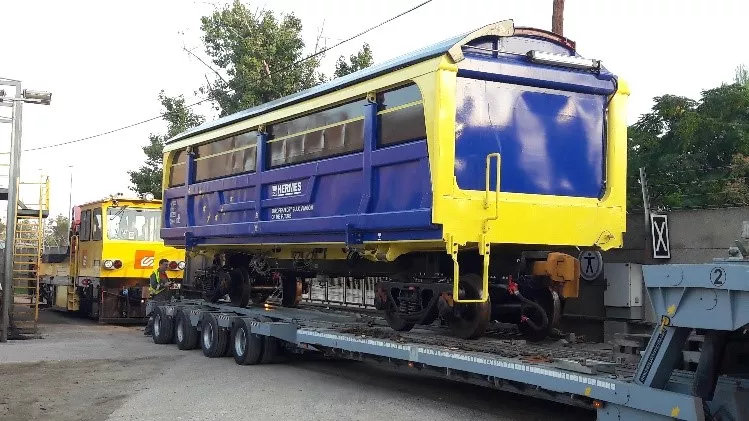Wireless Monitoring System
What are wireless sensors?
Wireless sensors are measurement tools made up of transmitters, which convert the signals from process control instruments into radio transmission. This radio signal is interpreted by a receiver that then converts the wireless signal to a specific desired output, such as an analog stream.
Wireless Sensor Network
A wireless sensor network is based on devices (nodes) that are capable of obtaining information from their environment, measuring any parameter of interest to the process being studied or monitored, processing it locally and communicating it through wireless links to a central coordination node.
The devices are self-contained units consisting of a sensing element, a microcontroller with certain computing cabalitites, a power source, and a radio transceiver (RF).
H2020 HERMES Project (2017-2018)
HERMES project was a H2020 European funded project developing the future wagon for transport of granular multi-materials in Europe. The wagon would have the highest payload, flexibility and would enable the fastest and smartest logistic services.

Wireless Monitoring System
INLOC was responsible for the design and the development of the wireless monitoring system for improved transport of granular multi-materials.
Inloc Robotics worked on the HERMES project during the years 2017 and 2018.
Several parameters from the wagon were monitored:
- the temperature and humidity of transported product (salt)
- the temperature and humidity of the wagon interior
- the pneumatic pressure for the brake system
- the fuel level
- the sandbox level
- the brake shoes condition
- the wagon axles load
- the temperature of the wheel bearings
- the GPS wagon positioning
IEEE.802.15.4 protocol
All these data was measured in three different sensor nodes distributed along the wagon and intercommunicated by RF devices using IEEE.802.15.4 protocol.
Let us remember that this protocol is a standard that defines the physical layer and the control of access to the wireless personal area networks with low data transmission rates.
The master node, had as well the capability of transmitting the data, once coded properly, to a cloud server via Sigfox technology. Transmission was performed once every hour to enhance battery life.
